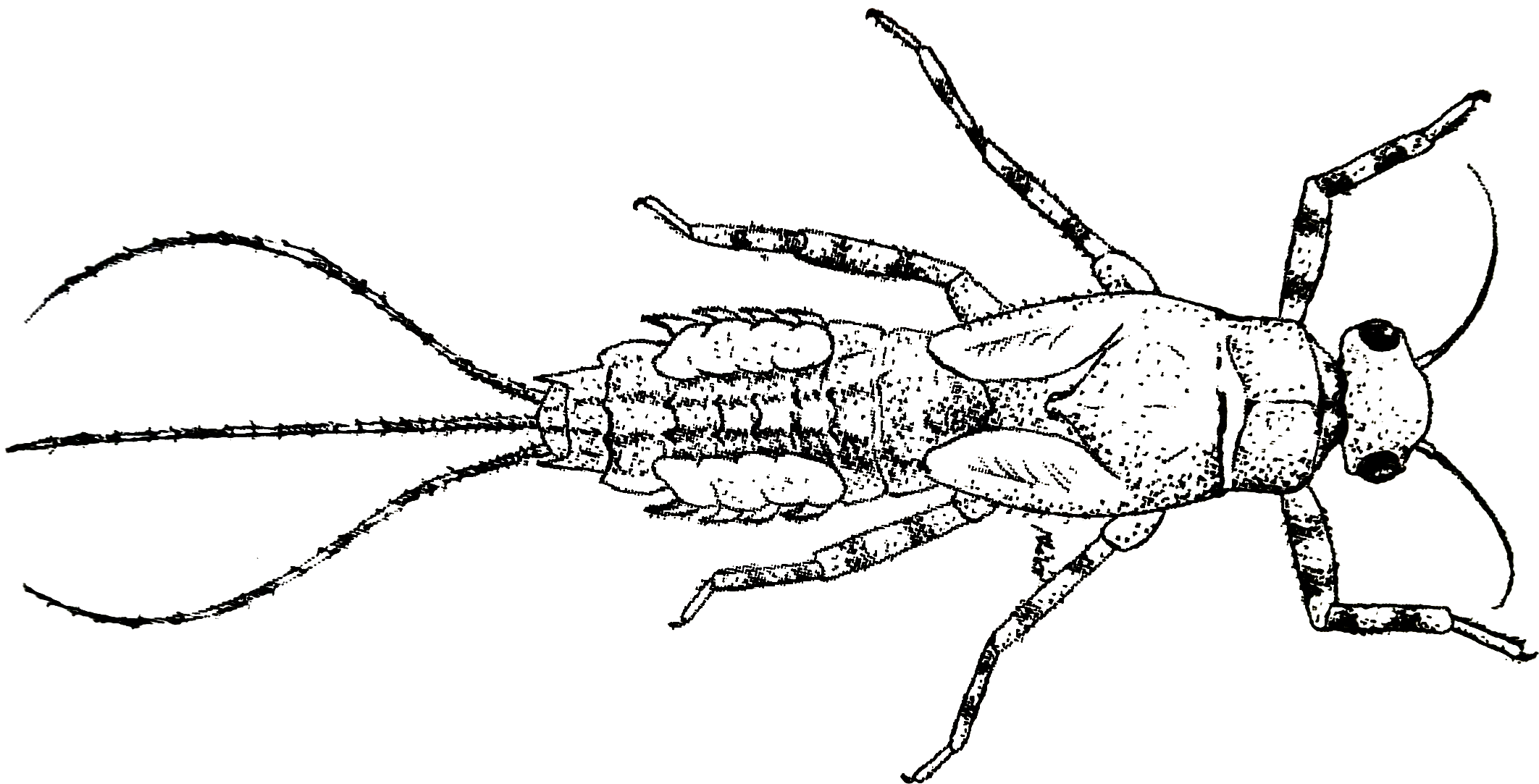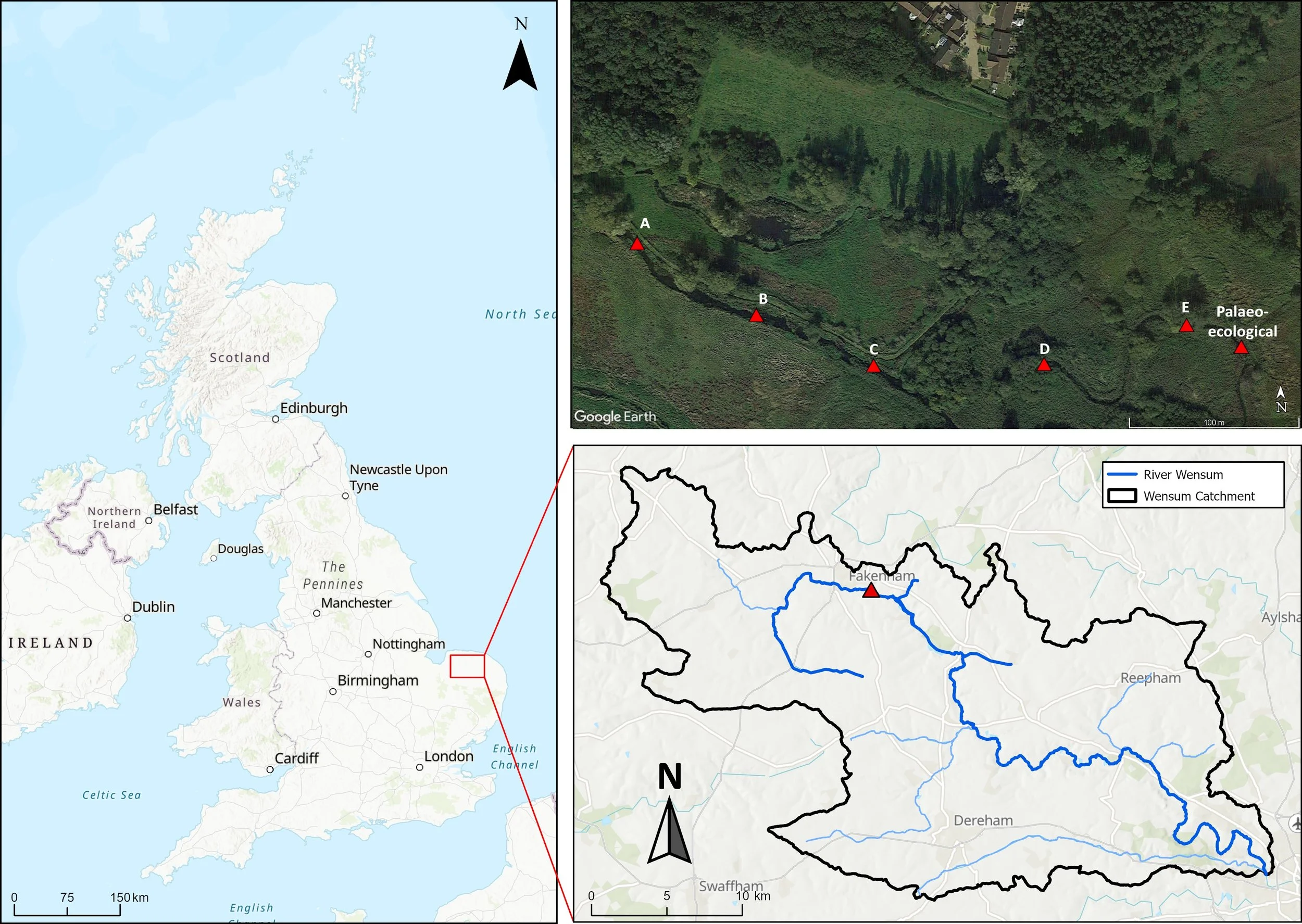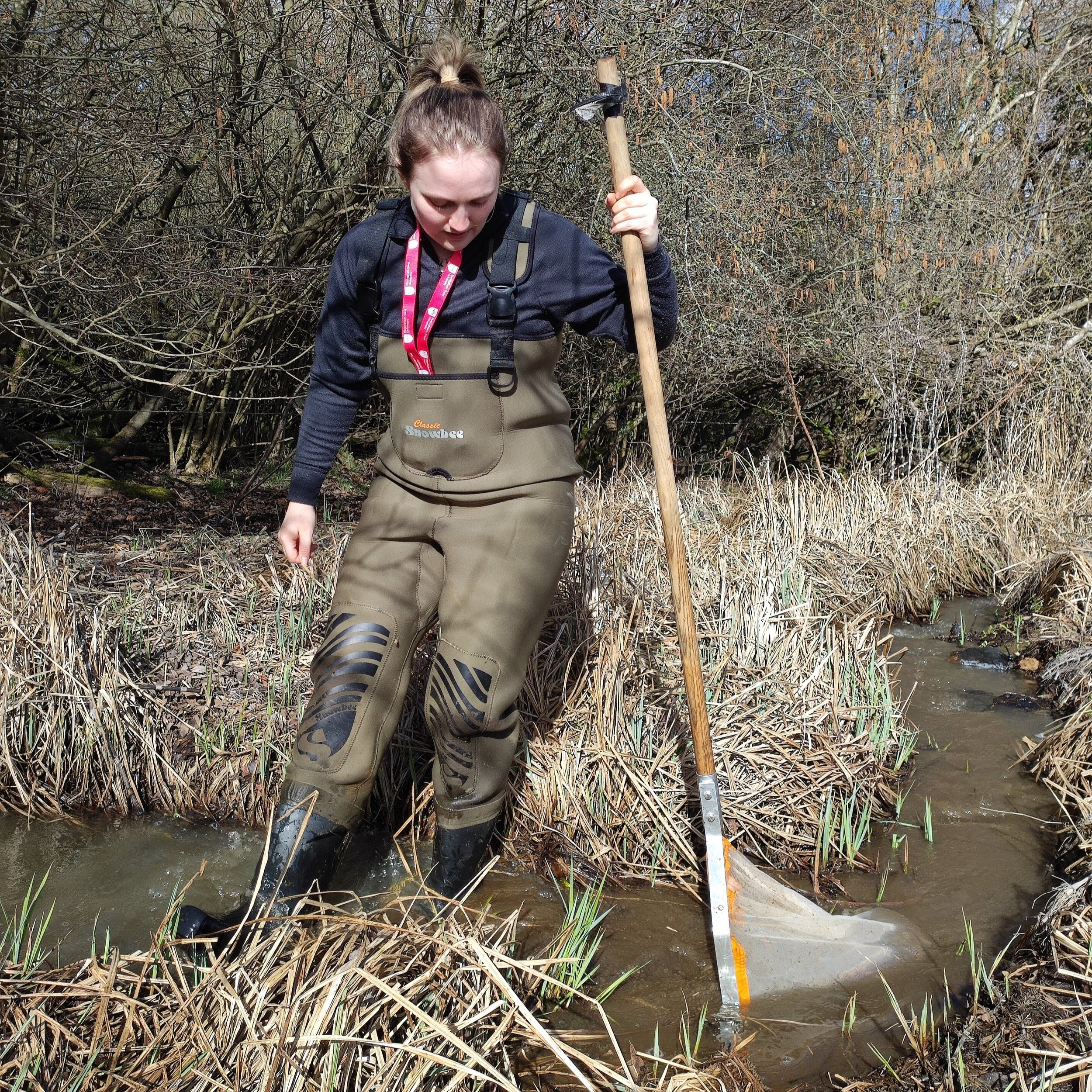Science Articles & Reviews
Introducing our series of FBA Voice science articles, edited by Rachel Stubbington, Nottingham Trent University. This section also includes some personal reviews.
Rachel is both a Fellow of the Freshwater Biological Association and long-standing Editor of FBA science articles. If you would like to write an article for publication on this webpage, please contact Rachel at: rachel.stubbington@ntu.ac.uk
FBA Voice is the monthly newsletter of the Freshwater Biological Association

Here, Holly Tipper, Amy Thorpe, and Daniel Read from UK Centre for Ecology & Hydrology, report on their work on the PAthways of Chemicals Into Freshwaters and their ecological ImpaCts (PACIFIC) project, which is investigating how human-made chemicals enter freshwater ecosystems and the impacts they have, particularly on microbial communities.
Catherine Duigan is an FBA Fellow, an honorary Professor of Environmental Science at Aberystwyth University and an independent environmental consultant, researcher and writer living in Wales. In this article, Catherine explores the significance of recently discovered records of the early history of the FBA.
Join Paul Leonard for his review of SEFS14, the 14th Symposium for European Freshwater Sciences, held in Bolu, Türkiye, from 21-25 July, 2025. Established in 1992, Bolu Abant İzzet Baysal University is situated approximately 250km east of Istanbul. This was the first time SEFS has been held in a non-European country, but this did not deter over 200 participants from 45 countries that included China, Russia, Nepal, the USA and Australia.
Simon Johnson introduces the exciting new LD-CHARM (Lake District Charr Recovery & Management) project. Simon is Executive Director of the Freshwater Biological Association, based in Windermere. He is a former Director of the Wild Trout Trust and the Eden Rivers Trust, and has worked as an independent consultant for river and catchment restoration. This article is reproduced with kind permission from the Wild Trout Trust.
James White is a research fellow specialising in water sciences at the University of Birmingham. Here, James and colleagues report their collaborative research in which palaeoecological data was used to contextualise freshwater ecosystem recovery following a restoration project on the River Wensum. This article summarises the research presented by White et al. (2025), which formed part of a wider special issue on river restoration practices.
Louise Lavictoire is the FBA’s Head of Science and an expert in the conservation of rare freshwater species. Here, Louise and colleagues introduce Lake District Charr Recovery and Management (LD-CHARM), a new project that seeks to inform protection of threatened populations of the Arctic charr.
Rachel Stubbington and Romain Sarremejane from Nottingham Trent University, and Glenn Watts from the UK Centre for Ecology & Hydrology, are researchers interested in the ecological effects of drought and river drying on freshwater biodiversity. Here, they consider how future droughts could alter the communities in UK rivers, and if these events could drive communities and ecosystems to new stable states.
Lesser flamingos (Phoeniconaias minor) are fascinating birds. The only vertebrate to subsist on bacteria and algae, they mostly filter-feed the colonial cyanobacterium spirulina (Arthrospira fusiformis) from the surface waters of tropical African soda lakes. David Harper led research teams to Kenyan and Tanzanian lakes from 1982 until his retirement in 2015. In this – his second of two recent articles – David recalls his work with soda lakes and lesser flamingos.
Limnology, the science of lakes, had a slow start in Britain. The first limnological laboratory in Europe was established in Germany in 1892 and was followed by similar ventures in Denmark and Austria. Today, not many people know that the first limnological laboratory in Britain and Ireland was established on Lough Derg on the River Shannon in 1921. In this article, Glen George, Honorary Research Fellow with the FBA, describes the pioneering work carried out by scientists based at Ireland’s Lough Derg laboratory between 1921 and 1923.
Some of the oldest cartographic names in Britain are those associated with lakes and rivers. One area that has retained many ancient names is the modern county of Cumbria. The Anglo-Saxons only reached the area at the end of the 7th century and were displaced by the Strathclyde Welsh in the 10th. Tracing the roots of these names can thus be difficult, because they include elements from several languages. In this article Glen George, Honorary Research Fellow with the FBA, explores the ancient roots of some lake and river names in Cumbria.
River restoration projects often focus on riparian management actions such as planting and fencing. Isabelle Barrett from Waterways Centre, Lincoln University, New Zealand, discusses how such projects can help rivers to recover from degradation, and explores how successful recovery of instream communities requires additional steps targeting physical habitat quality.
There is arguably no lake anywhere in the world that has greater combined economic value and scientific knowledge than Lake Naivasha, a freshwater lake at 2,000 m altitude in Kenya’s Rift Valley. Here, David Harper, FBA Fellow and Emeritus Professor at the University of Leicester, reviews the past and looks to the future of the lake and its alteration by human pressures.
Mary Kelly, Professor of Applied Freshwater Ecology at University College Dublin and FBA Fellow, introduces the Co-Centre for Climate + Biodiversity + Water, which launched in January to undertake research providing evidence and urgently needed solutions for the interlinked climate change, biodiversity loss and water quality degradation crises.
Martin Wilkes from the School of Life Sciences, University of Essex, provides a new vision for river restoration planning and ecosystem assessment, in response to new laws in England intended to stem biodiversity loss, placing rivers at the heart of national efforts to promote nature recovery.
In this article, Kate Heppell and Hannah Parry-Wilson introduce the River Chess Smarter Water Catchment project, which is funded by Thames Water and delivered by a partnership of eight stakeholder organisations who share an interest in the health of the River Chess.
By Richard Handley & Judy England
Richard Handley is the Chalk Stream Manager at the Environment Agency and President of the Chartered Institute of Ecology and Environmental Management. Judy England is a National Research Scientist within the Environment Agency’s Chief Scientist’s Group, an FBA Fellow and a member of the River Restoration Centre Advisory Board.
By Beth Mondon
Beth Mondon is a Fluvial Geomorphologist at AECOM who recently completed her PhD at the University of Southampton. Here, Beth discusses the fine sediment problem in chalk streams and key findings from her research on the development of ecologically relevant fine sediment targets.
By Louise Lavictoire & Chris West
Freshwater mussels are among the most threatened taxa in Europe with the freshwater pearl mussel (Margaritifera margaritifera) experiencing declines of over 90% during the 20th century.
Lakes in the Anthropocene: Reflections on Tracking Ecosystem Change in the Arctic, by John P. Smol
Benoît Demars reviews this important new textbook.
By Oliver Longstaffe, Andrew Apanasionok, Phillipa Bates, Lesley Rippon, Simon Rouen, Romain Sarremejane and Rachel Stubbington
The authors collaborated on a project to develop biomonitoring methods for England’s new Small Streams Network. In particular, we evaluated how well the standard 3-minute kick sampling method characterizes macroinvertebrate assemblages. Here, we report key project findings.
By Brian Knights
Riverfly Monitoring Initiative (RMI) sampling involves trained volunteer citizen scientists taking 3-minute kick samples and counting eight macroinvertebrate indicator groups.
By Stephen C. Maberly, Laurence Carvalho and Philip J Taylor
This article uses data within the UK Lakes Portal to describe the abundance, distribution and size of UK standing waters.
By Lynsey R. Harper, Bernd Hänfling and Lori Lawson Handley
Reporting on environmental DNA monitoring of Windermere, from initial ground-truthing efforts for fish to citizen science assessment of other vertebrates. Many coauthors contributed to the research spearheaded by Bernd Hänfling and Lori Lawson Handley, and the most recent eDNA survey was made possible by volunteers.
By Stewart Clarke
This autumn, I attended the Scientific Advances in River Restoration (SARR) conference hosted by the River Restoration Centre in Liverpool, UK. River restoration as we currently understand it—management interventions to modify or reinstate instream physical habitat features lost due to human modification—began in earnest in the 1990s and has matured as a practice.
By Alan Hildrew
Despite the substantial weight of evidence, garnered over a period of 50 years or more, that terrestrial organic matter is the most important source of energy fuelling many stream food webs, it is being seriously questioned by new approaches which suggest that algal carbon in headwater streams is much more important than previously thought.
The Biology and Ecology of Streams and Rivers, by Alan Hildrew and Paul Giller
Rachel Stubbington reviews this important new textbook.
By Romain Sarremejane, Teresa Silverthorn, Nans Barthélémy, Margot Jans, Amélie Truchy, Naiara López-Rojo, Arnaud Foulquier, Thibault Datry.
Rivers are the Earth’s arteries, transporting water, nutrients and organic matter from lands to seas, and contributing to key ecosystem functions associated with carbon and nutrient cycles.
By Jack A. Greenhalgh, Martin J. Genner, Gareth Jones.
New technologies, such as environmental DNA, drones, radar, camera traps and LIDAR are increasingly being used to survey ecosystems and provide new perspectives on ecosystem function and condition.
By Katrina Woodfield, Martyn Kelly, Bill Brierley & Bernadette White
Unsightly growths of filamentous algae are among the most conspicuous indicators of poor water quality and, as such, are obvious candidates for citizen scientists to use for assessing the condition of their local rivers and streams.
FBA Fellows Martyn Kelly and Catherine Duigan remind us of a significant anniversary in the FBA’s history.
Fifty years ago this year, Geoffrey Fryer, then a scientist at the FBA’s Windermere laboratories, was elected as a Fellow of the Royal Society. In 2022, he becomes part of a very small group (just 12 out of 1763) who have achieved a half-century of Fellowship.






























